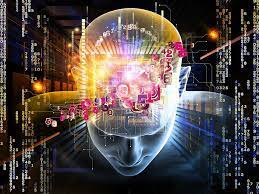How AI is Revolutionising Disaster Response and Saving Lives
Disasters can strike at any time, leaving a trail of destruction in their wake. From earthquakes to hurricanes, tsunamis to wildfires, the impact of these events can be devastating, causing widespread damage and loss of life. In the face of such crises, disaster response teams work tirelessly to provide relief and support to those affected. However, traditional approaches to disaster response can often be slow and inefficient, with teams struggling to manage the sheer volume of data and information they need to process in order to make the best decisions.
This is where AI-powered disaster response comes in. By harnessing the power of machine learning and other AI technologies, disaster response teams can work smarter, not harder, to save lives and minimize damage. In this article, we’ll explore some of the key benefits of AI-powered disaster response and how it is revolutionizing the way we prepare for and respond to disasters.
Rapid Identification of Areas of Need
When a disaster strikes, it can be difficult to quickly assess the extent of the damage and identify areas of need. This is where AI-powered image analysis comes in. By using satellite imagery and other sources of visual data, AI algorithms can quickly identify areas that have been affected by the disaster, pinpointing the most critical areas where relief efforts need to be focused.

For example, in the aftermath of Hurricane Harvey in 2017, a team of researchers from the University of Texas used machine learning algorithms to analyze satellite images of the affected areas. The algorithms were able to identify areas where flooding was most severe, enabling relief workers to quickly target their efforts where they were needed most.
Improved Resource Allocation
One of the biggest challenges in disaster response is allocating resources effectively. With so many variables to consider, it can be difficult to know where to focus efforts and how to distribute resources in the most efficient way. AI-powered disaster response can help to solve this problem by providing real-time data and analysis to support decision-making.
For example, in the aftermath of the 2015 earthquake in Nepal, researchers from the University of California, Los Angeles, used satellite imagery and machine learning algorithms to identify the most heavily damaged areas. This data was then used to inform decisions about where to deploy rescue teams, medical supplies, and other resources, enabling relief efforts to be targeted more effectively.
Predictive Analytics for Better Preparedness
While disaster response is crucial, it’s also important to be prepared before a disaster strikes. AI-powered predictive analytics can help to identify areas that are most at risk of natural disasters, enabling governments and relief organizations to take proactive steps to prepare for these events.
For example, in Japan, the government has implemented a system called the Earthquake Early Warning (EEW) system. This system uses AI algorithms to analyze seismic data in real-time, providing early warnings of earthquakes and enabling people to take action to protect themselves before the quake hits.
Improved Communication and Coordination
Effective communication and coordination are essential in disaster response. However, traditional communication methods can be slow and unreliable, particularly in the chaos of a disaster situation. AI-powered communication systems can help to overcome these challenges, providing real-time information and enabling teams to coordinate more effectively.
For example, during the 2018 wildfires in California, a team of researchers from the University of California, San Diego, developed an AI-powered communication system that enabled emergency responders to share information and coordinate their efforts more effectively. The system used machine learning algorithms to analyze social media data, providing real-time updates on the location and severity of the fires.
Enhanced Situational Awareness
In a disaster situation, having up-to-date and accurate information is crucial. AI-powered disaster response can provide enhanced situational awareness, enabling teams to make informed decisions based on real-time data.
For example, during the 2020 COVID-19 pandemic, AI algorithms were used to track the spread of the virus in real-time. By analyzing data from multiple sources, including social media, news reports, and government announcements, these algorithms were able to provide accurate information about the spread of the virus, enabling governments and healthcare providers to make informed decisions about how to respond.

Improved Disaster Recovery
Disaster response is just one part of the equation – it’s also important to ensure that affected communities are able to recover and rebuild in the aftermath of a disaster. AI-powered disaster recovery can help to accelerate this process by providing real-time data and analysis to support decision-making.
For example, in the aftermath of Hurricane Maria in Puerto Rico, a team of researchers from Carnegie Mellon University used AI algorithms to analyze social media data in order to identify areas where people were in need of assistance. This information was then used to guide relief efforts, enabling aid to be delivered more quickly and effectively.
Conclusion
AI-powered disaster response has the potential to revolutionize the way we prepare for and respond to disasters. By providing real-time data and analysis, enhancing situational awareness, and improving communication and coordination, AI can help disaster response teams to work smarter and more effectively, saving lives and minimizing damage. As we continue to face an ever-increasing number of natural disasters and other crises, it’s clear that AI will play an increasingly important role in helping us to respond and recover.
However, it’s important to note that AI is not a panacea. While it can provide valuable support and insights, it’s still up to human responders to make the final decisions and take action on the ground. Additionally, there are also concerns about data privacy and bias that need to be addressed in the development and implementation of AI-powered disaster response systems.
Nonetheless, the potential benefits of AI-powered disaster response are clear. As technology continues to advance and more data becomes available, we can expect to see even more sophisticated and effective AI systems that will help to save lives and minimise the impact of disasters. In the face of the growing threats posed by climate change and other global challenges, the importance of investing in AI-powered disaster response cannot be overstated.
















